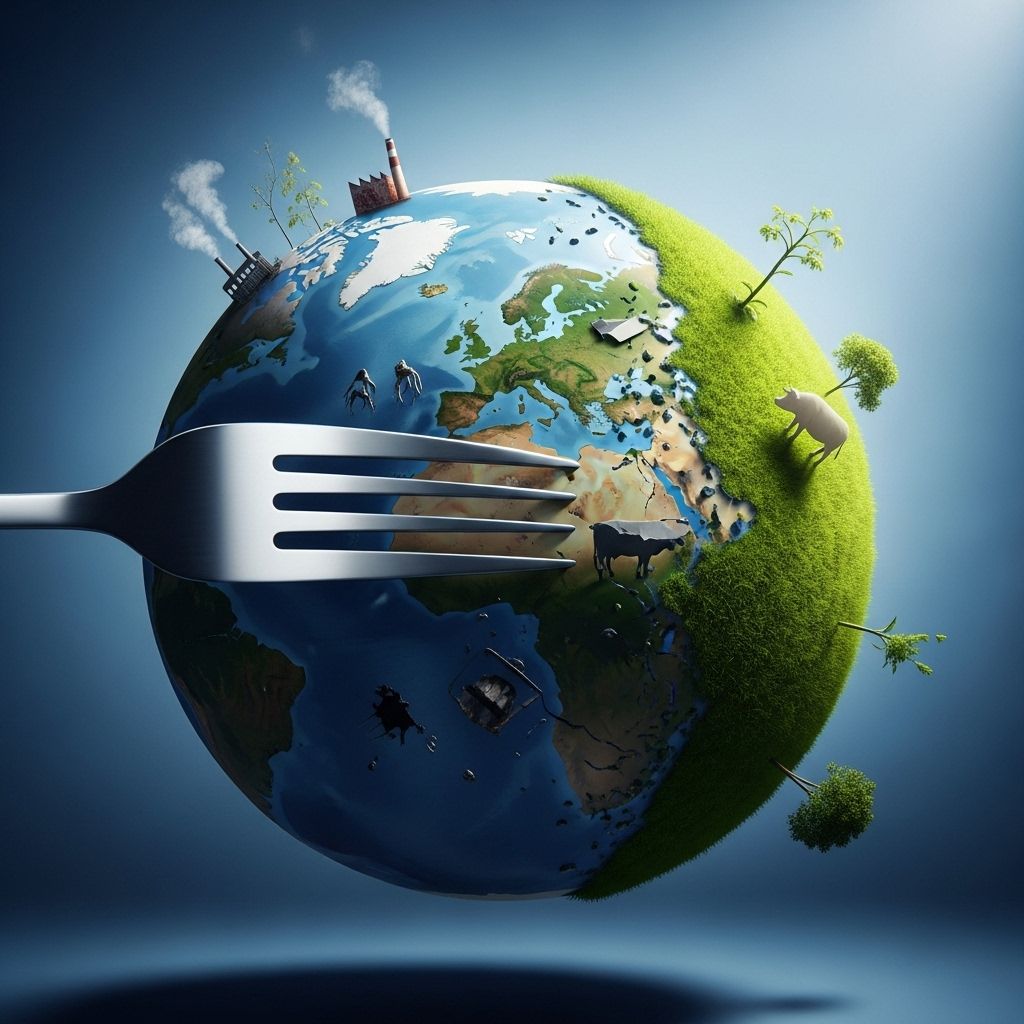Why Rich Countries Must Eat Less Meat to Save the Planet
Reducing meat consumption in wealthy nations is vital for climate action and global food security.

Why Wealthy Countries Must Eat Less Meat
Meat plays a central role in diets around the world, but the environmental costs of large-scale animal agriculture have reached a tipping point. Leading researchers argue that if the world is to tackle climate change and ensure food security for future generations, rich countries must dramatically reduce their meat consumption. This article explores the evidence, the global disparities in meat eating, the environmental impact, and the urgent need for change.
The Environmental Cost of Meat
Livestock farming is a major contributor to climate change. The sector emits significant amounts of greenhouse gases, mainly methane and nitrous oxide, which are far more potent than CO2 in their global warming potential. According to the latest research, wealthy countries’ appetite for meat is responsible for a significant portion of these emissions, particularly from red meat like beef and lamb, which have the highest environmental footprints per kilogram.
- Cattle and sheep are ruminant animals that produce large quantities of methane during digestion.
- Livestock farming uses massive land and water resources, and is a primary driver of deforestation and biodiversity loss.
- The production of animal feed for livestock, especially grain and soy, competes directly with crops that could feed humans.
- According to a 2022 assessment in the Annual Review of Resource Economics, a 75% reduction in meat consumption is necessary for rich countries to stay within international climate targets.
Current Meat Consumption Patterns: A Global Disparity
The world’s meat consumption is not evenly distributed. There is a stark divide between wealthy nations and developing regions, both in the amount and type of meat consumed.
- Each EU citizen consumes about 80 kg of meat per year.
- If everyone globally ate as much meat as Europeans and North Americans, international climate goals would be impossible to reach and numerous ecosystems would be at risk of collapse.
- By contrast, many low-income countries rely on animal products mainly for essential nutrition, not as a dietary luxury.
- In some rural and arid areas, animal grazing is the only viable form of food production and income.
Meat Consumption by Country and Type
| Country | Annual Meat Consumption (kg per capita) | Most Eaten Type |
|---|---|---|
| Hong Kong | >170 | Pork |
| Iceland | >170 | Fish & Seafood |
| U.S.A. | ~124 | Poultry |
| EU (Average) | ~80 | Poultry/Pork |
| Mongolia | ~66 (mutton & goat) | Mutton & Goat |
| Argentina | ~47 | Beef |
Source: United Nations Food & Agriculture Organization, 2022
Why Cutting Meat in Rich Countries Matters Most
Although reducing meat consumption is important everywhere, the greatest climate and environmental benefits come from cuts in wealthy, high-income nations. This is because:
- High-income countries account for a disproportionate share of animal-based emissions.
- Rich nations have diverse dietary choices and less dependence on animal protein for nutrition or survival.
- Poorer regions may lack the resources, land, or infrastructure for large-scale crop production, making animal husbandry more necessary and efficient.
Therefore, policies and recommendations calling for drastic reductions focus specifically on North America, Europe, Australia, and other affluent areas.
How Rich Countries Drive Global Emissions
The world’s top 20 richest countries are responsible for approximately 75% of global CO2 emissions. As economies reopen and populations grow more affluent, their high level of animal protein demand is a significant driver of agricultural emissions and resource use.
The Link Between Meat and Food Security
Beyond climate, another pressing argument for reducing meat consumption in high-income countries is food security. The war in Ukraine has underscored how fragile global grain markets are. Currently, almost half of all grains grown worldwide are used as animal feed, not
References
Read full bio of Sneha Tete












